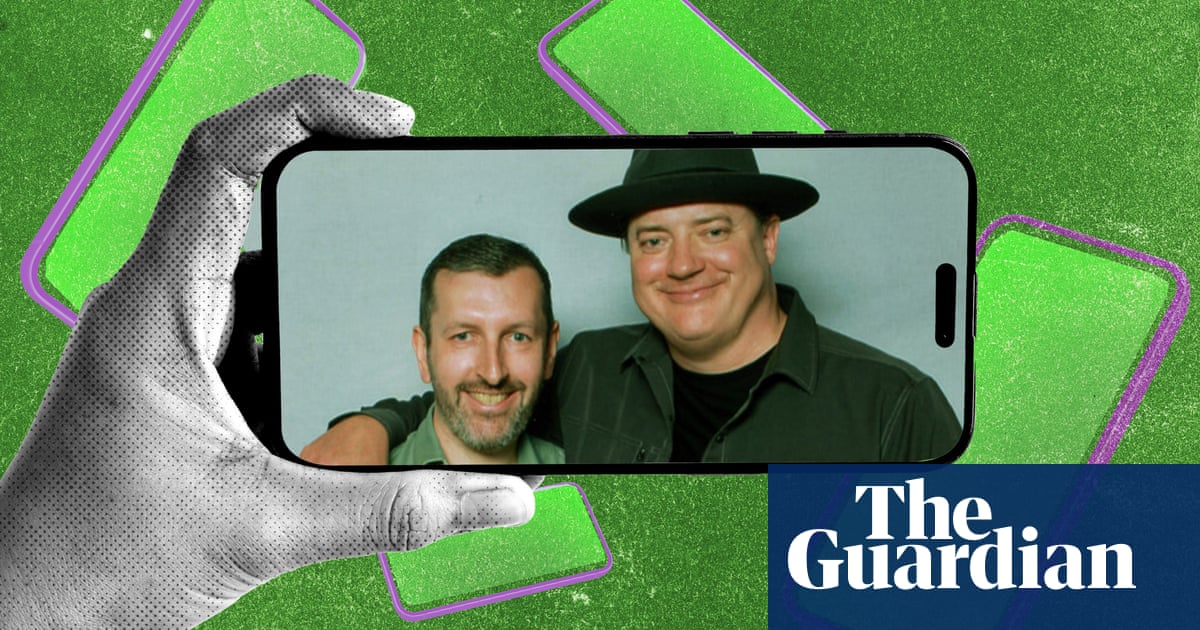Australian Anna Ryan-Punch was 15 when she received her first friendship book – a handmade and decorated pocket-sized booklet full of names and addresses of people looking for pen pals. Recipients were invited to add their details to the list, send a letter to other signatories, and then pass the booklet on to someone new.
“They were included in letters as a side thing,” Ryan-Punch, now 44, says. When it was full of potential pen pals, the friendship book would, hopefully, be returned to the person who made it. “I didn’t have anyone to send them on to, but I wrote to people out of them and that kind of grew into a circle.”
It was the start of what would become a lifelong hobby. While email, social media and instant messages have replaced handwritten letters for most, the practice of “swapping” friendship books, or FBs, has not only persisted but blossomed into a stand-alone subculture, with its own vernacular, etiquette, rules and drama.
Ryan-Punch’s first pen pals came through the now defunct International Youth Service (IYS), a Finnish company formed in 1952 that described itself as “devoted to the furthering of the cause of penfriendship … For, just to have a friend abroad is an education in itself.” IYS connected teens of the pre-internet generation with other hopeful pen pals of the same age around the world. FBs were a DIY way of doing the same thing, and pen pals who found each other through the IYS often found themselves recipients of FBs, too. After a while, many began making and swapping FBs for their own sake.

FBs are creations as varied as the hands they pass through, ranging from compact “nice and neat” constructions (N&Ns) to elaborately decorated productions (decos), allowing each swapper a whole page on which to express themselves. “High-quality” FBs (HQs) fall somewhere in the middle. There are mini quizzes (slams, or “silly little answering machines”) and tightly packed single sheets (crams) with space for addresses only.
Alongside FBs, swappers also trade stickers, labels, postage stamps, notepaper and other nick-nacks through the post. Ryan-Punch shares a sticker bag with instructions: “Take out any 4 stickers. Put in 8 new ones (NO tiny) and your [address] label. Sign and date. Signer #6 please send home to owner or any ICR [a signatory who has indicated “I can return” finished items to the maker].” Label bags work similarly, but recipients put in their own address labels and send or make items for those whose labels they take out.
Ryan-Punch, a librarian, now writes to about 20 people and swaps with the same. With so much incoming and outgoing post, she has had to develop a filing system to keep track of who swaps what, who sent what when, and to whom she has responded.
“We are generally all stationery addicts – that’s a common theme,” she says. She collects washi tape and stickers and uses them to decorate her swaps. “I like the craft activity with no pressure. It doesn’t really involve word processing, so it’s a break from reading or writing letters as a leisure activity.”
Charlene, 54, a swapper who spoke to Guardian Australia but asked that her surname not be published, got her first pen pals through an ad in an American crochet magazine when she was 28. Naturally crafty, when FBs started accompanying her pen pals’ letters, she fell in love with them. She most enjoys decos, embellishing them with scrapbooking paper, stickers, washi tape, lace, ribbon, or anything else she has on hand. “They’re basically little art collage books,” she says.
Charlene connects with new swappers on internet forums and Facebook groups. Strict standards attend some of these: one, for instance, says N&Ns must have no visible staples or binding on the front cover and be embellished with multiple decorative elements. LQs, or “low-quality” FBs, are seen as lazy. People who keep FBs that weren’t made by or for them, who steal stickers, slice the decorations off other swappers’ labels to use as their own barter, or who “send crap” are blacklisted.

“The unspoken rule is that you play fair,” Charlene says. “If it says ‘take two, add five’, you take two, add five. Or if you don’t want to take any, you add three. There are some people out there that don’t play fair. But I always put something in there that I’d like to receive.”
Charlene has no idea how many people she swaps with now. Sometimes, she says, she sends so many FBs and goodie bags at once that the parcels weigh up to 5kg.
In what appears to be the sole academic article published on swapping, German researcher Anja Löbert claims friendship books are an innovation of Take That fans in the 1990s. Devotees of the British pop group used FBs to find other fans globally with whom they could swap photos, posters, videos and other memorabilia.
Ryan-Punch, whose early swapping intersected with this fandom, remembers the illicit trade in Take That memorabilia – in particular, a photo-developing shop in central Melbourne that bought and sold bootleg fan photos under the counter. “You had to shuffle in and be like, ‘Have you got Take That photos?’ and they’d produce baskets from under the desk for us to flip through and buy,” she says.
But while Take That fans made prolific use of FBs, they did not invent them. FBs were circulating at least as early as the 1980s, well before the group’s establishment.
Kate Denton received her first FB at 13 in 1988. She was already writing to 50 people worldwide since a local teen magazine published her request for pen pals when she was just 11. These days, she only writes letters to four, but she swaps with 35 others around the world.
“I’ve always loved writing, playing with pretty paper and that sort of thing,” says Denton. “I’m a paper crafter at heart – I make cards, and I do scrapbooking.” Swapping is another way for her to indulge in those loves, she says. “It’s just something fun to do that brings a smile to your face instead of getting bills in the mail.”
Is this why swapping has persisted, even after the internet sounded a death knell for so much handwritten mail?
Its persistence also seems at least partly generational nostalgia. The IYS closed in 2008, citing a lack of youth interest in letter-writing, yet its influence on earlier generations was profound. Few traces of it remain online, save for a handful of nostalgic blog posts, but when its archives were sold by a Finnish auction house in 2010, one single lot contained 5m envelopes in 7200 boxes, weighing 25,000kg.
The sale came to the attention of an American philatelist, who wrote in a breathless circular: “They kept the incoming mail! Not only did they keep it, but they sorted it by country into boxes. Even better, they kept the covers [envelopes] in the boxes in incoming date order. And then they marked the boxes with the country name and dates of the covers within.” The entire haul was bought by a stamp collector in Africa, and many of the envelopes still show up on eBay, often with stamps of Australian origin.

For some swappers, FBs are still a route to longhand letters. Signatories mark their names and addresses with acronyms like LLPW (“long letter pals wanted”), NSW/NPW (“new swappers wanted/new pen pals wanted”), A/A (“answer all”). Some add extra stipulations – “no prisoners please” is an unexpectedly common one. Charlene says she corresponded with inmates in United States jails until one revealed that pen pal addresses were bought and sold.
Swappers are often shy about what they do for fear of being mocked – Denton says she and her model-train building husband bonded early over their “unique hobbies” – but Ryan-Punch happily posts pictures of her colourful mail on social media. “I like seeing where they go around the world and how long they take to come back. Sometimes, they never come back.”
Handwritten letters still hold a unique appeal for her, which she surmises is because they narrow her focus and allow for thought and reflection in a way that social media and email don’t. “It’s like journaling but better,” she says. “I’m really bad at answering emails. There’s something about the immediacy of it that I don’t like. I want to receive a letter and write back in a month or so.”
She has never worried much about her address circulating among strangers by post. “When I started, we were all in the White Pages anyway.”

 19 hours ago
12
19 hours ago
12













































